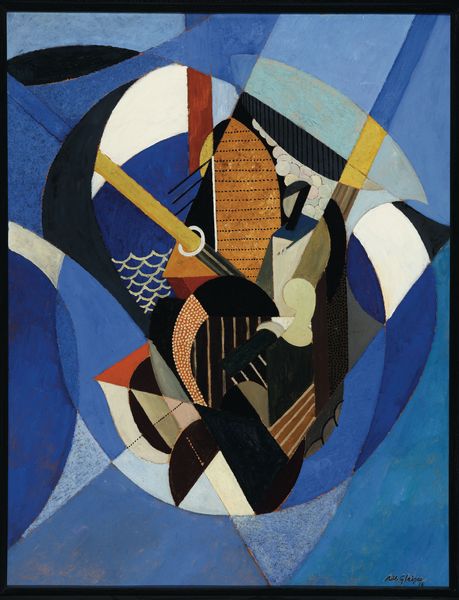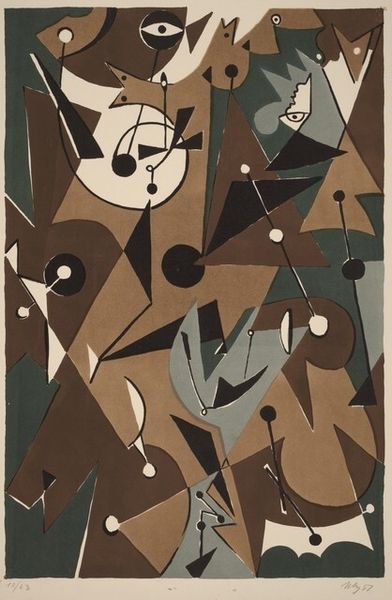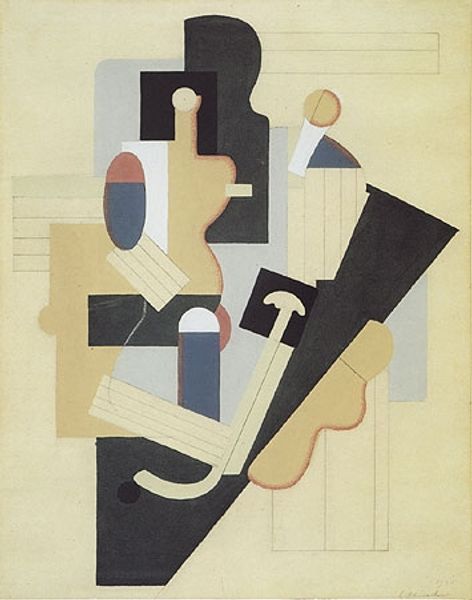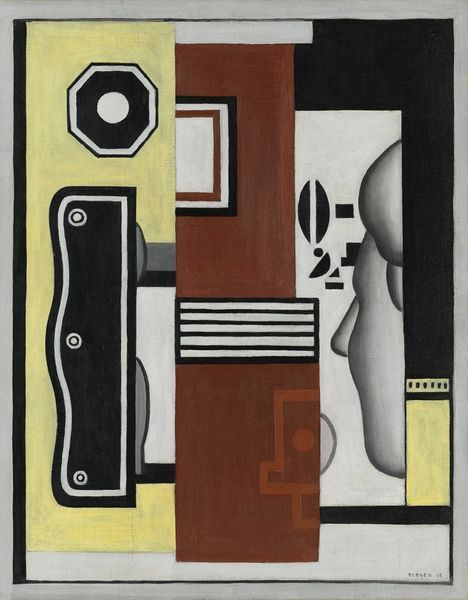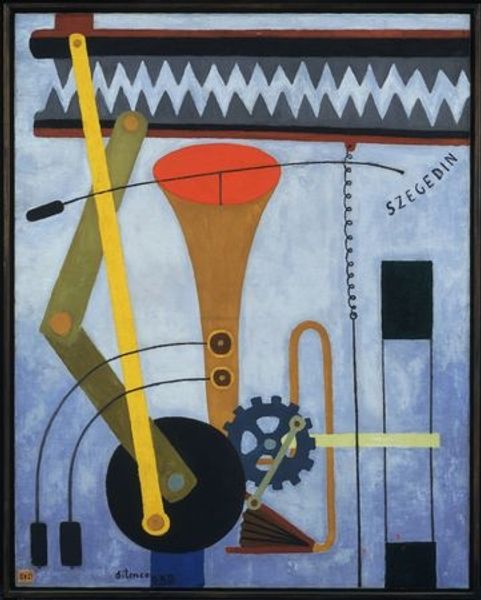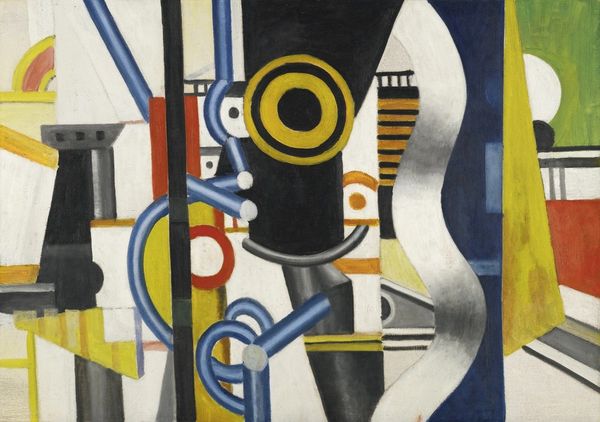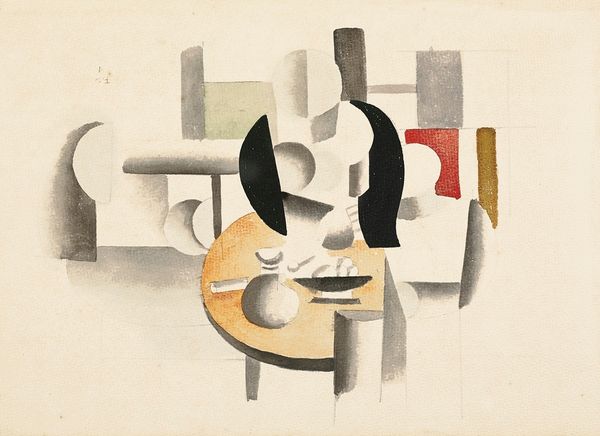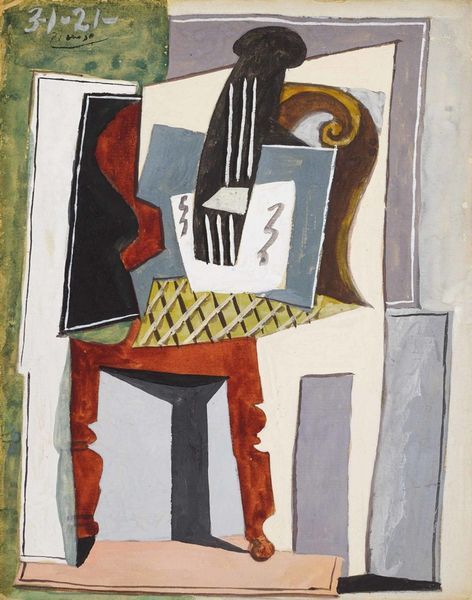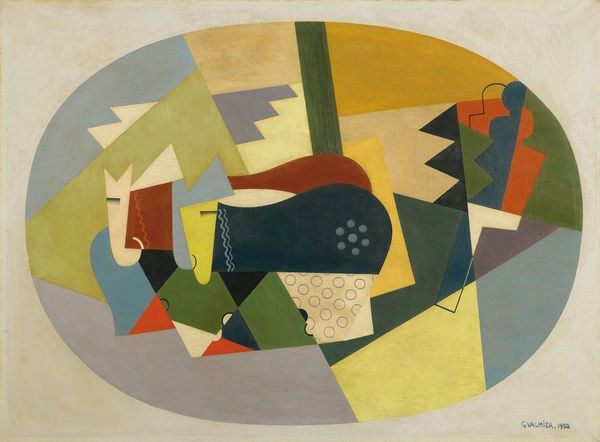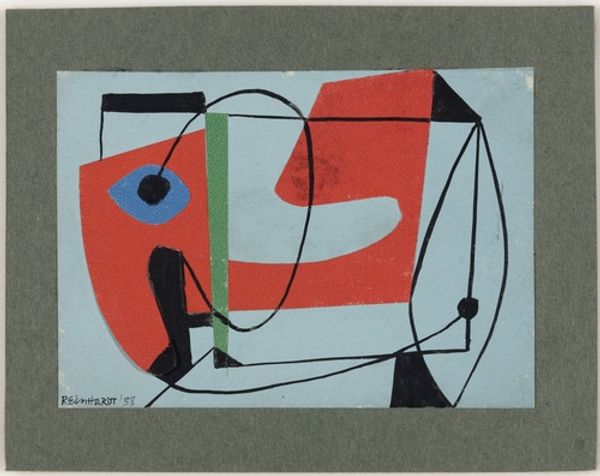
Dimensions: support: 651 x 537 mm frame: 850 x 740 x 75 mm
Copyright: © ADAGP, Paris and DACS, London 2014 | CC-BY-NC-ND 4.0 DEED, Photo: Tate
Curator: Fernand Léger’s painting, "Keys (Composition)," part of the Tate collection, presents an intriguing array of geometric forms, painted with a limited palette. What's your initial take? Editor: It feels symbolic, almost like a codified dreamscape. Those key shapes especially, juxtaposed with organic forms, suggest unlocking something hidden. Curator: Léger embraced industrial materials. The simplified shapes and bold colors reflect the machine age's aesthetic. The canvas itself becomes a constructed object. Editor: But consider the deeper resonance of keys. They represent access, secrets, power. The composition hints at layers of meaning beyond the purely mechanical. Curator: Perhaps Léger uses those symbols to explore mass production's impact. The streamlined forms echo the efficiency and standardization of modern manufacturing. Editor: And maybe the wavy lines offer a counterpoint, symbolizing nature or the subconscious mind, resisting complete mechanization. Curator: Ultimately, Léger's piece stands as a testament to the dynamism of modern art, questioning the boundaries between the mechanical and the symbolic. Editor: A potent reminder of how simple shapes can hold such layered significance. It's fascinating how that plays out even now.
Comments
Join the conversation
Join millions of artists and users on Artera today and experience the ultimate creative platform.
tate 6 months ago
⋮
During the late 1920s Léger often adopted Surrealist strategies of juxtaposition, as with the grey-and-white keys and the yellow profile here, and irrational space. Yet Léger, like his friend Edward Wadsworth, was primarily concerned with the formal structure of a painting. Consequently the work's surreal elements are subordinated to his interest in combinations of shape and colour. Wadsworth bought this picture from Léger after they met in Paris in the late 1920s. Gallery label, September 2004
